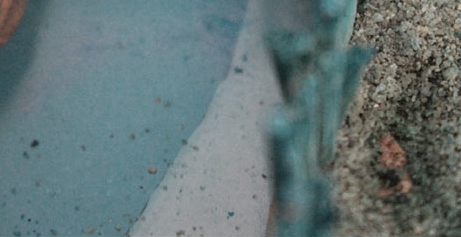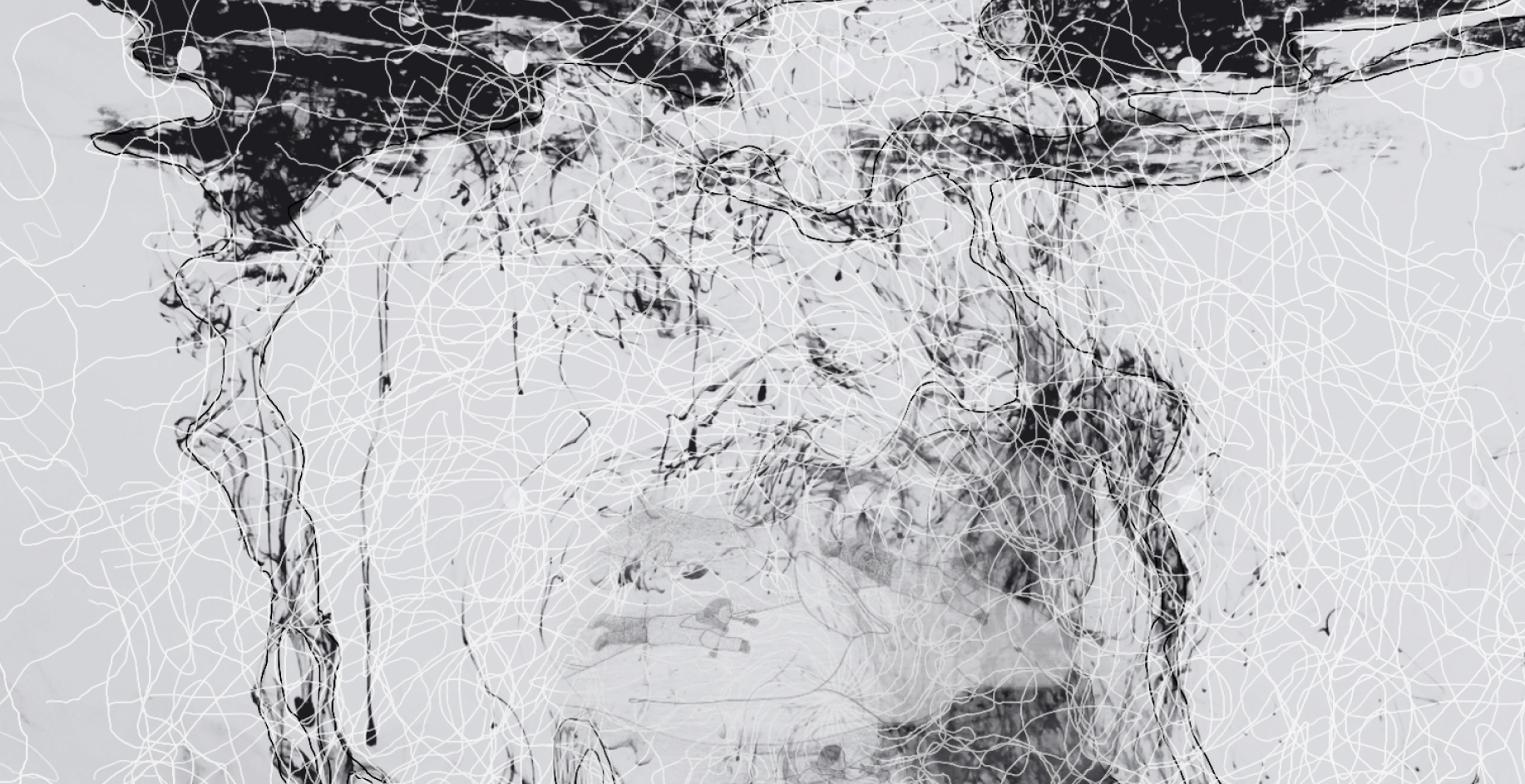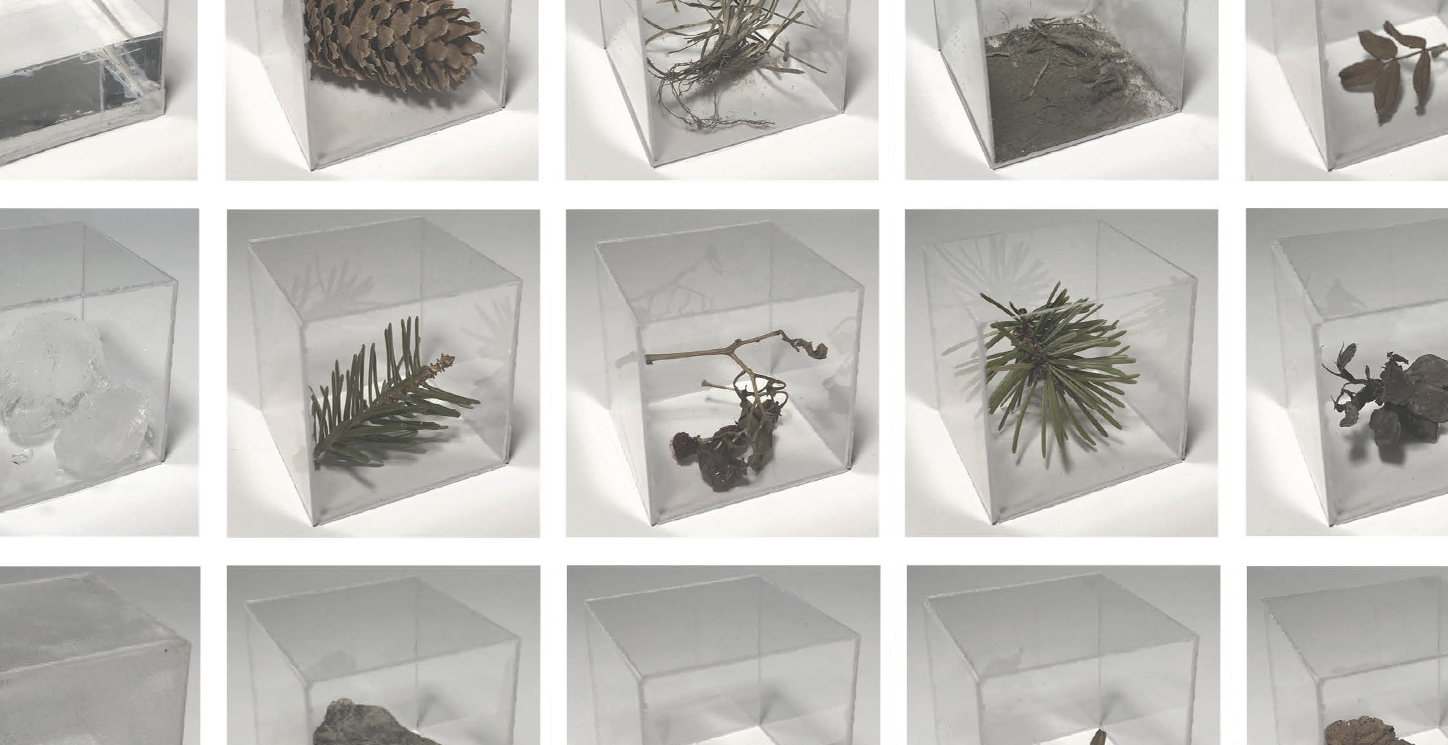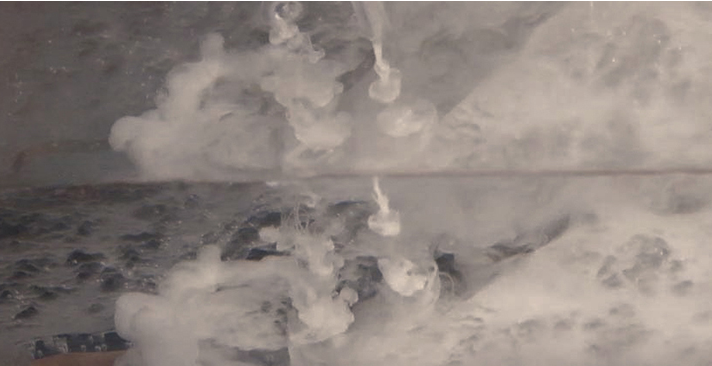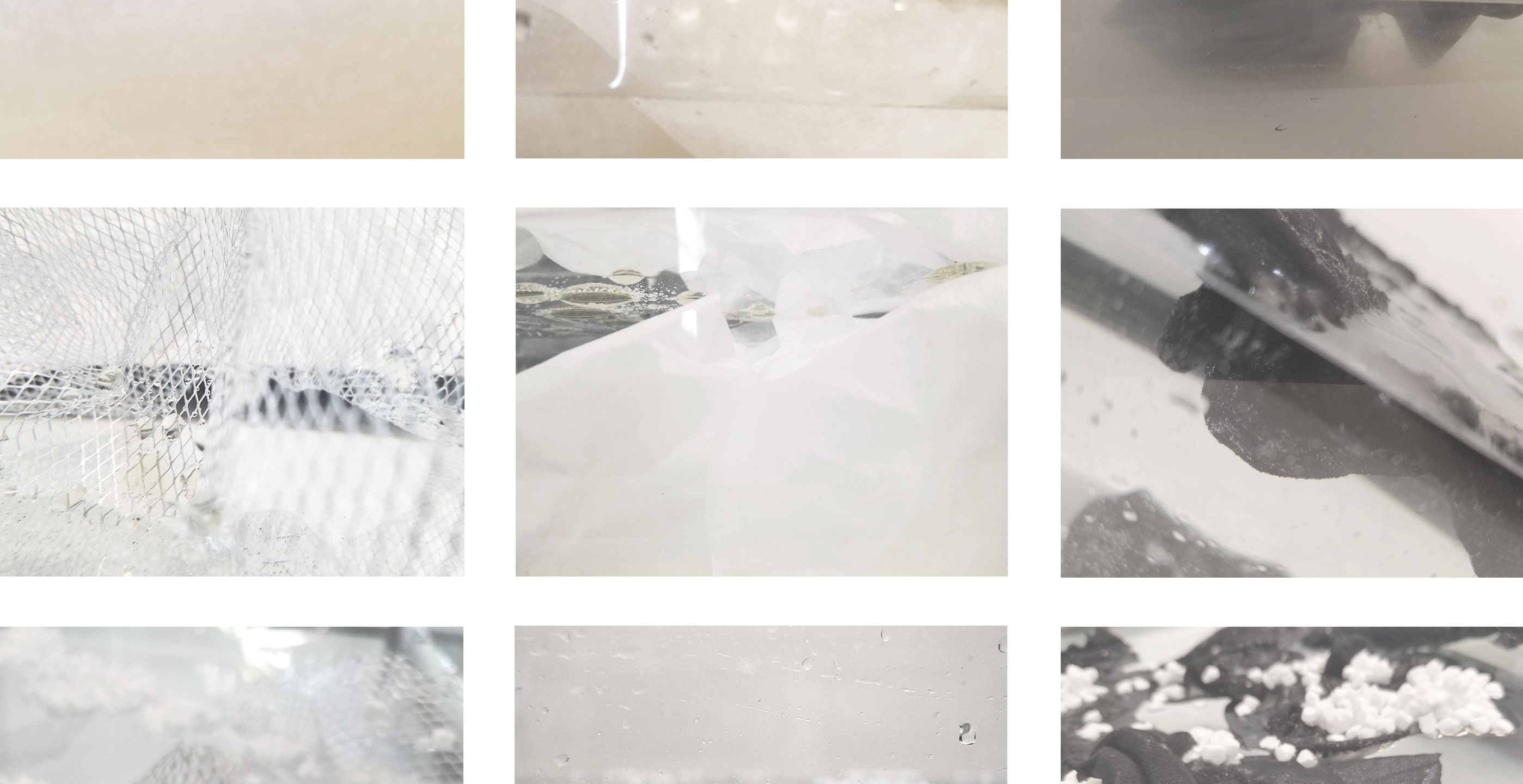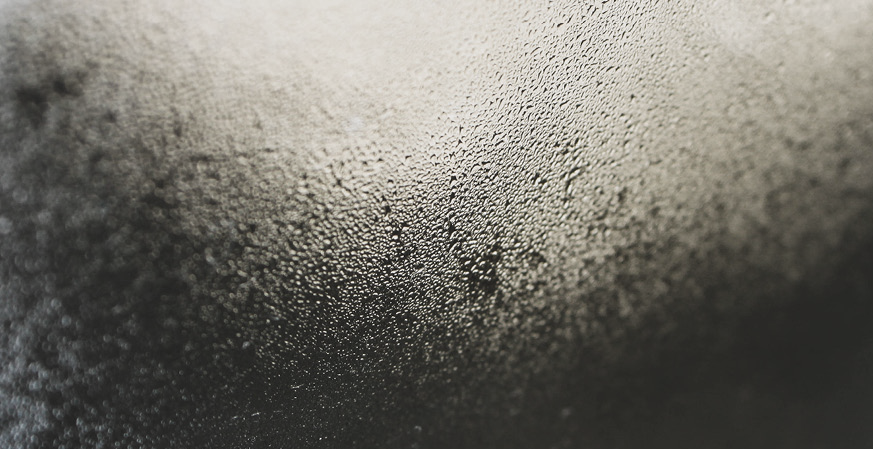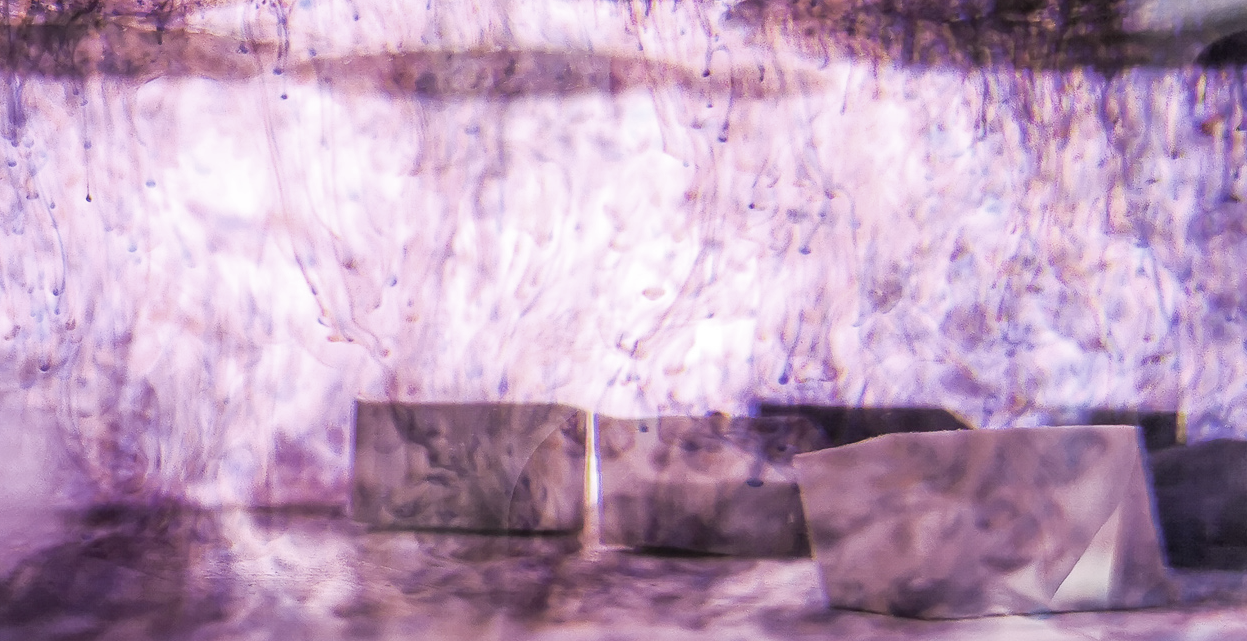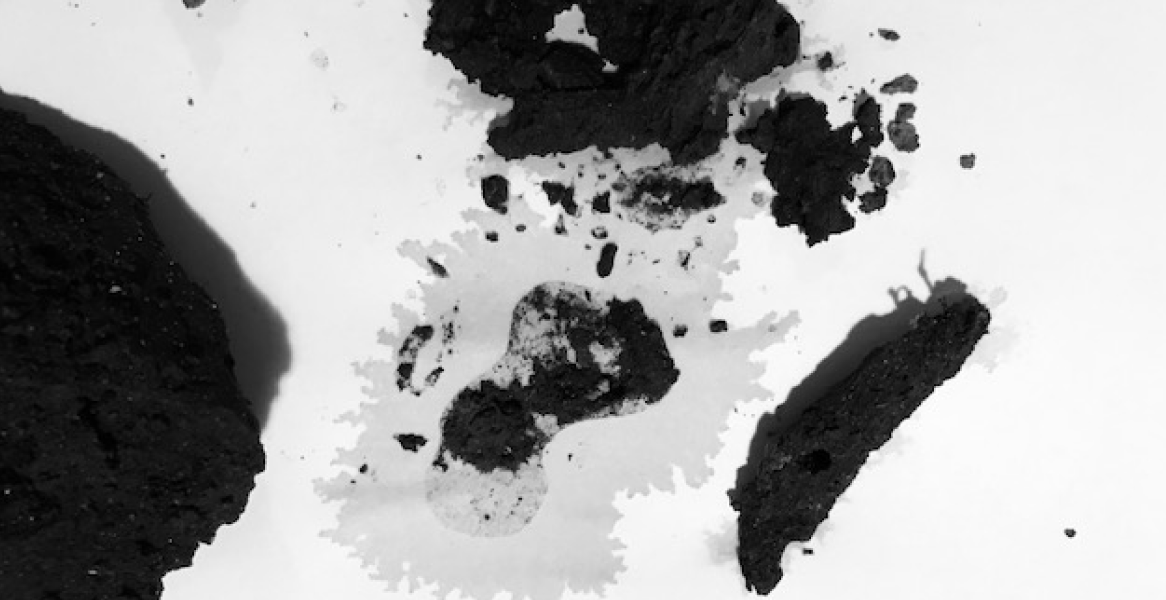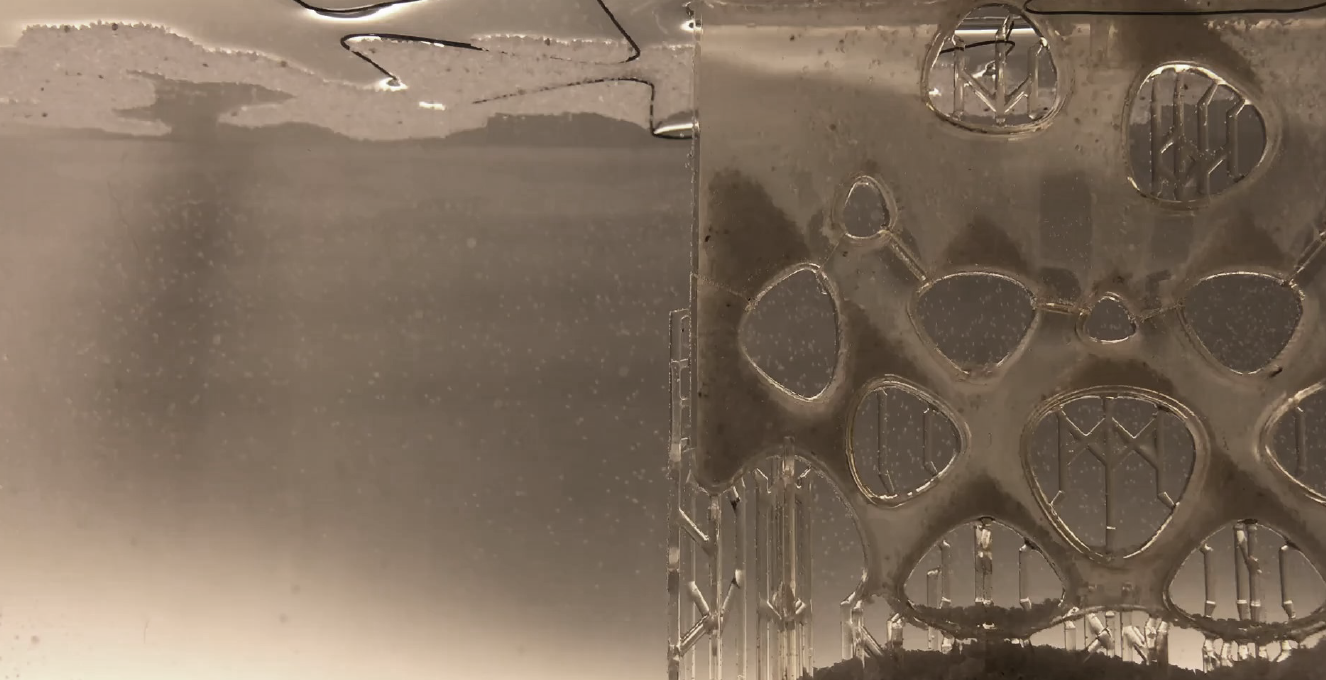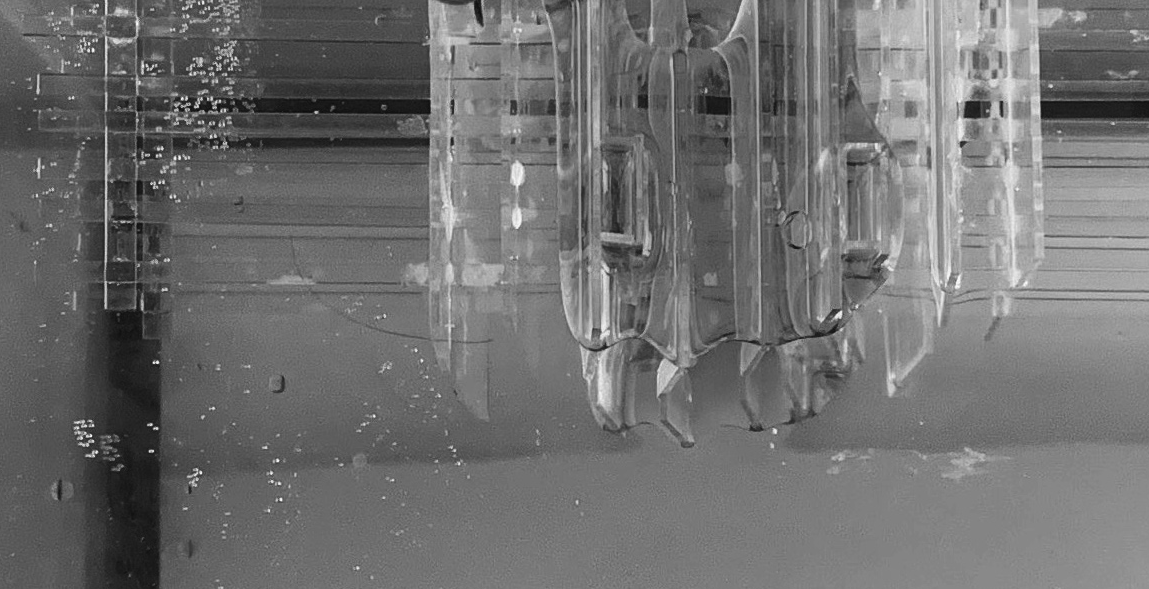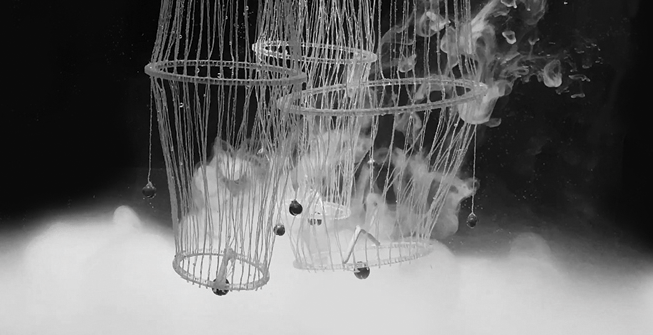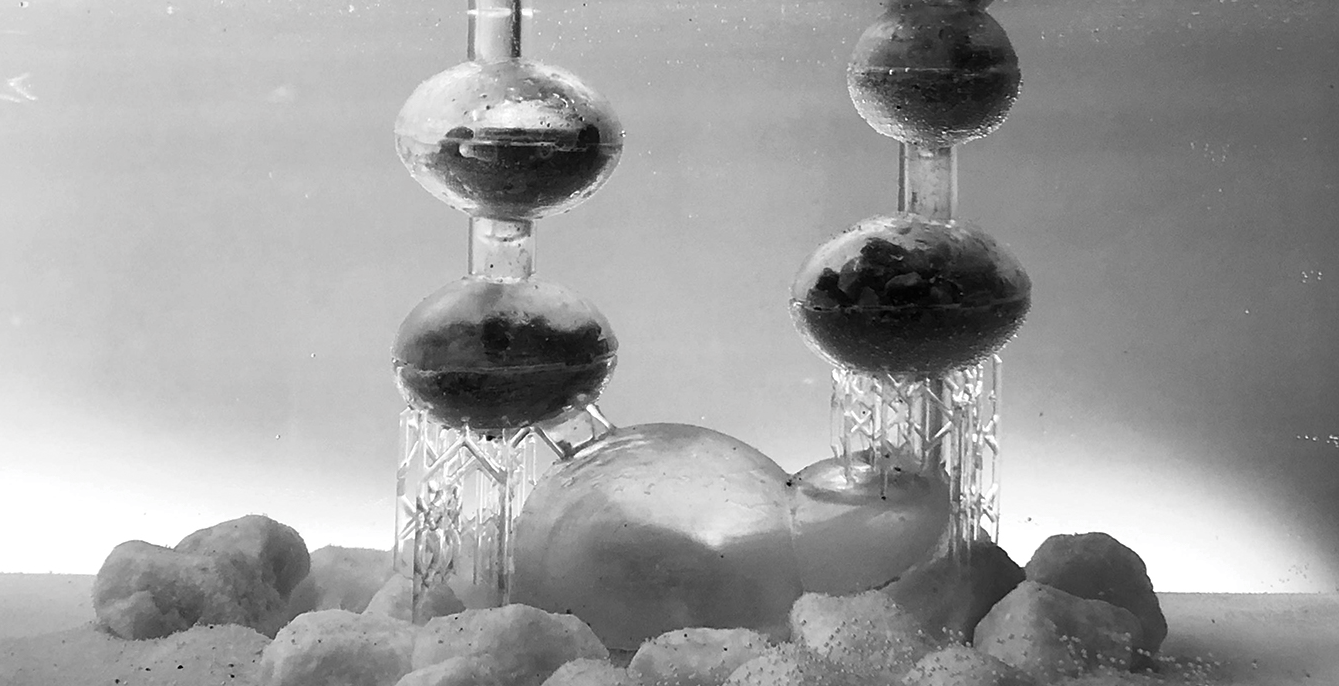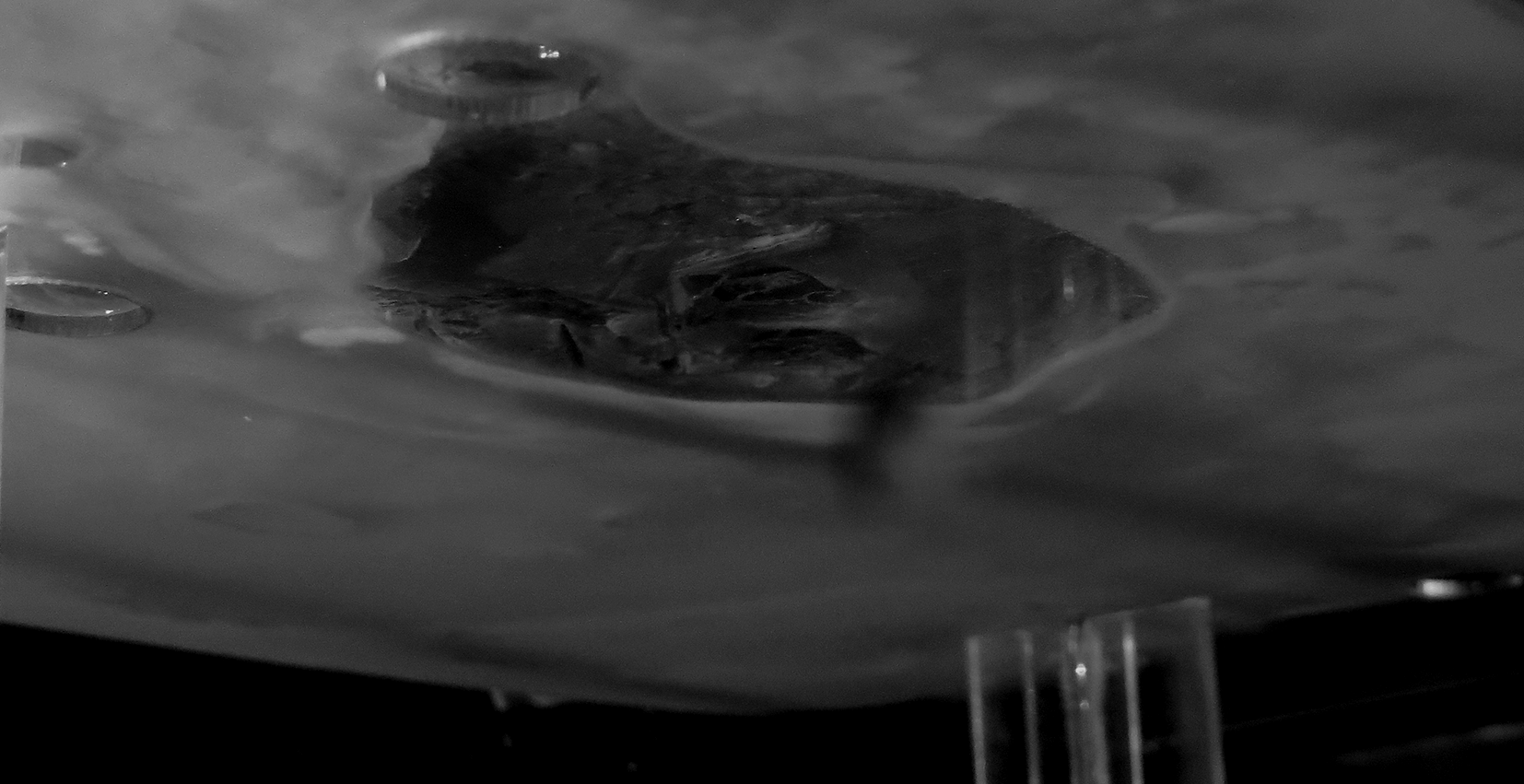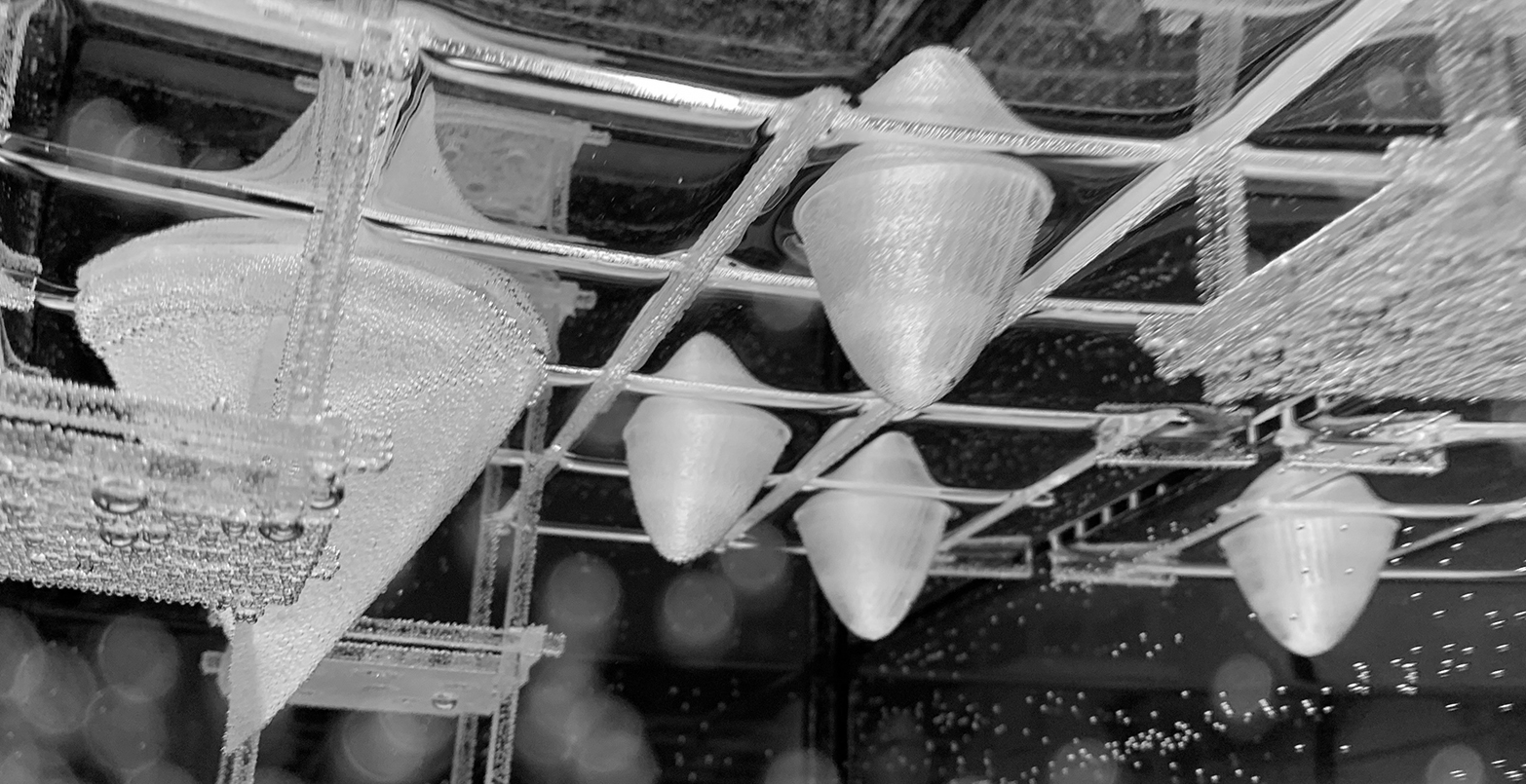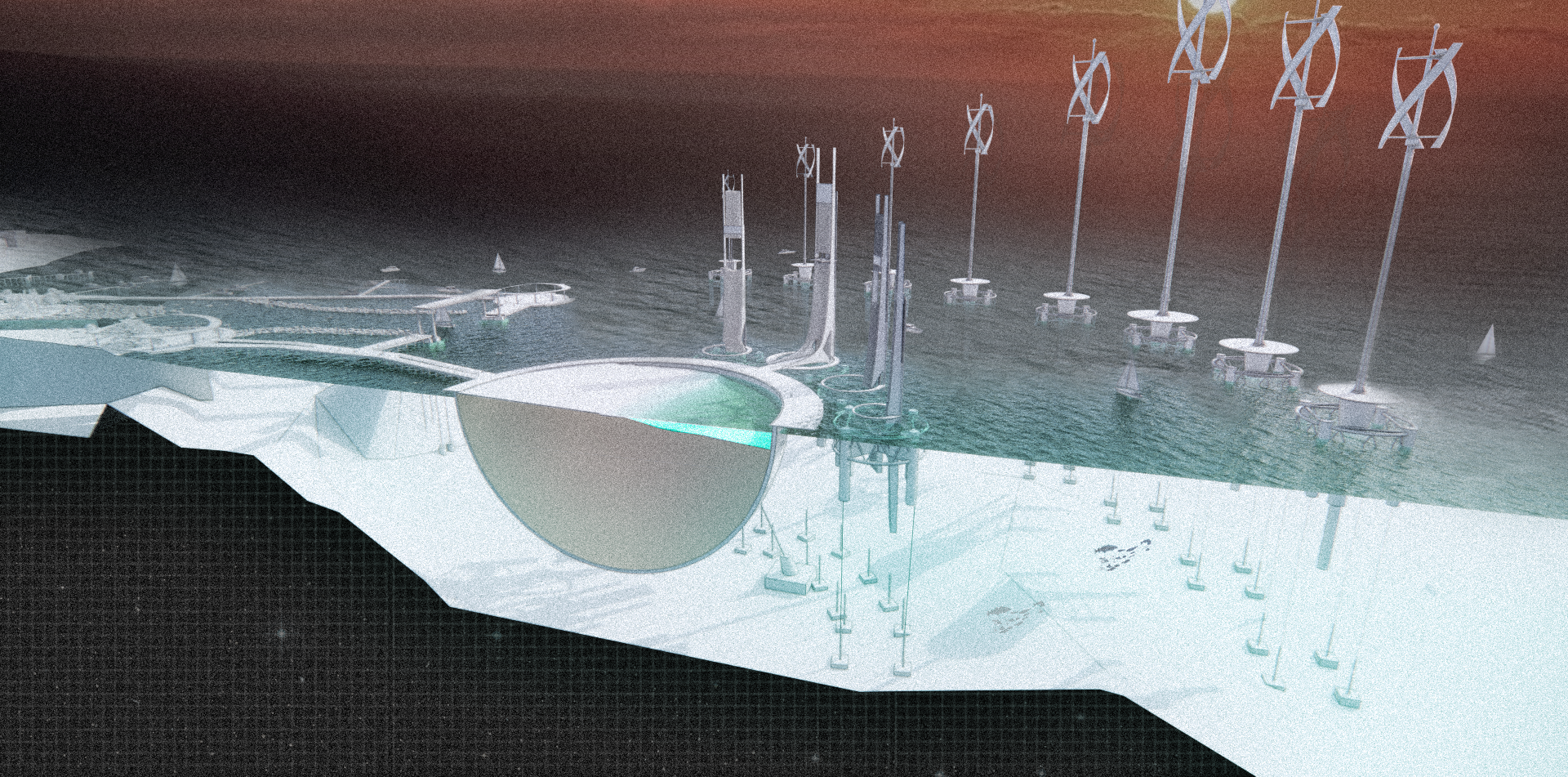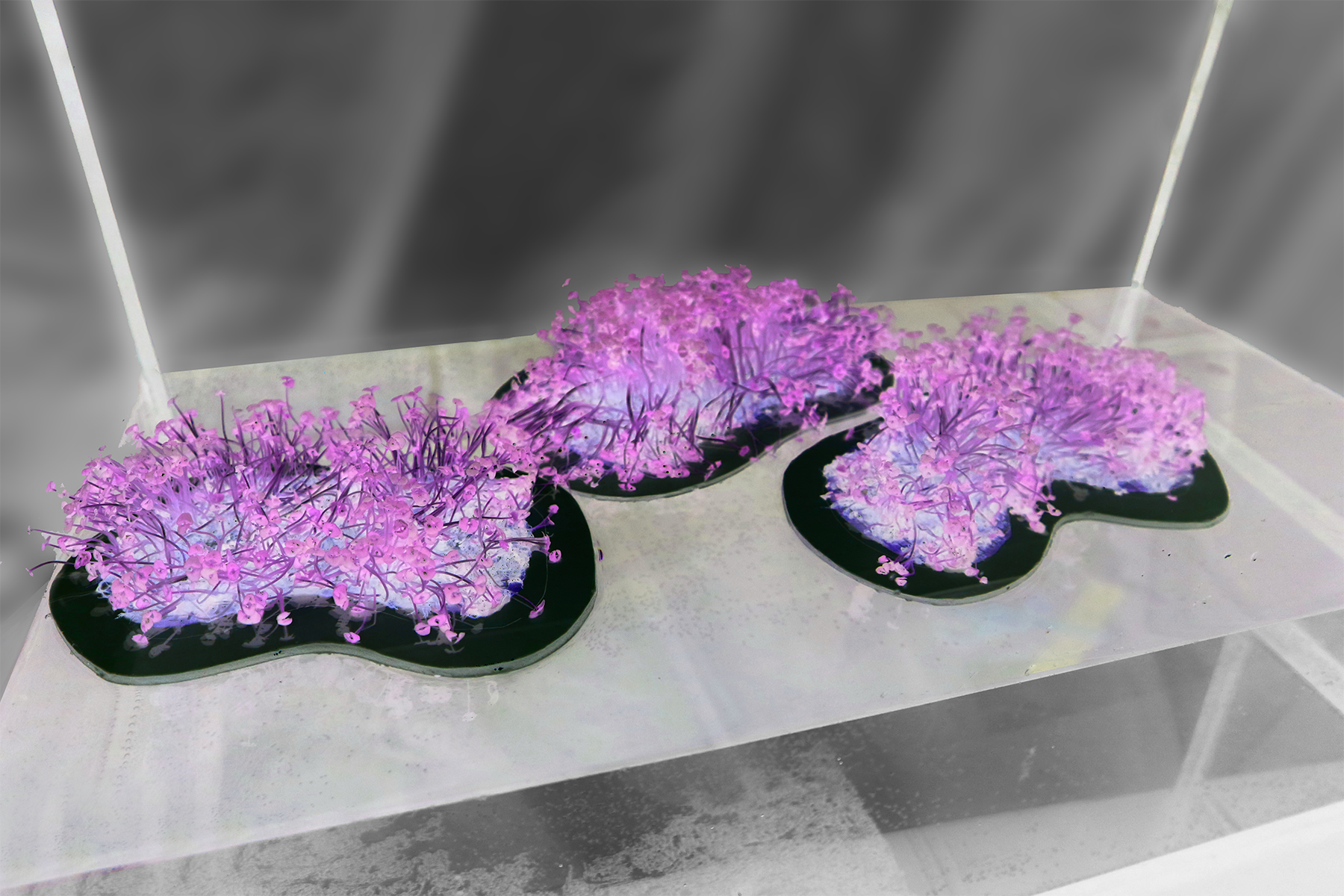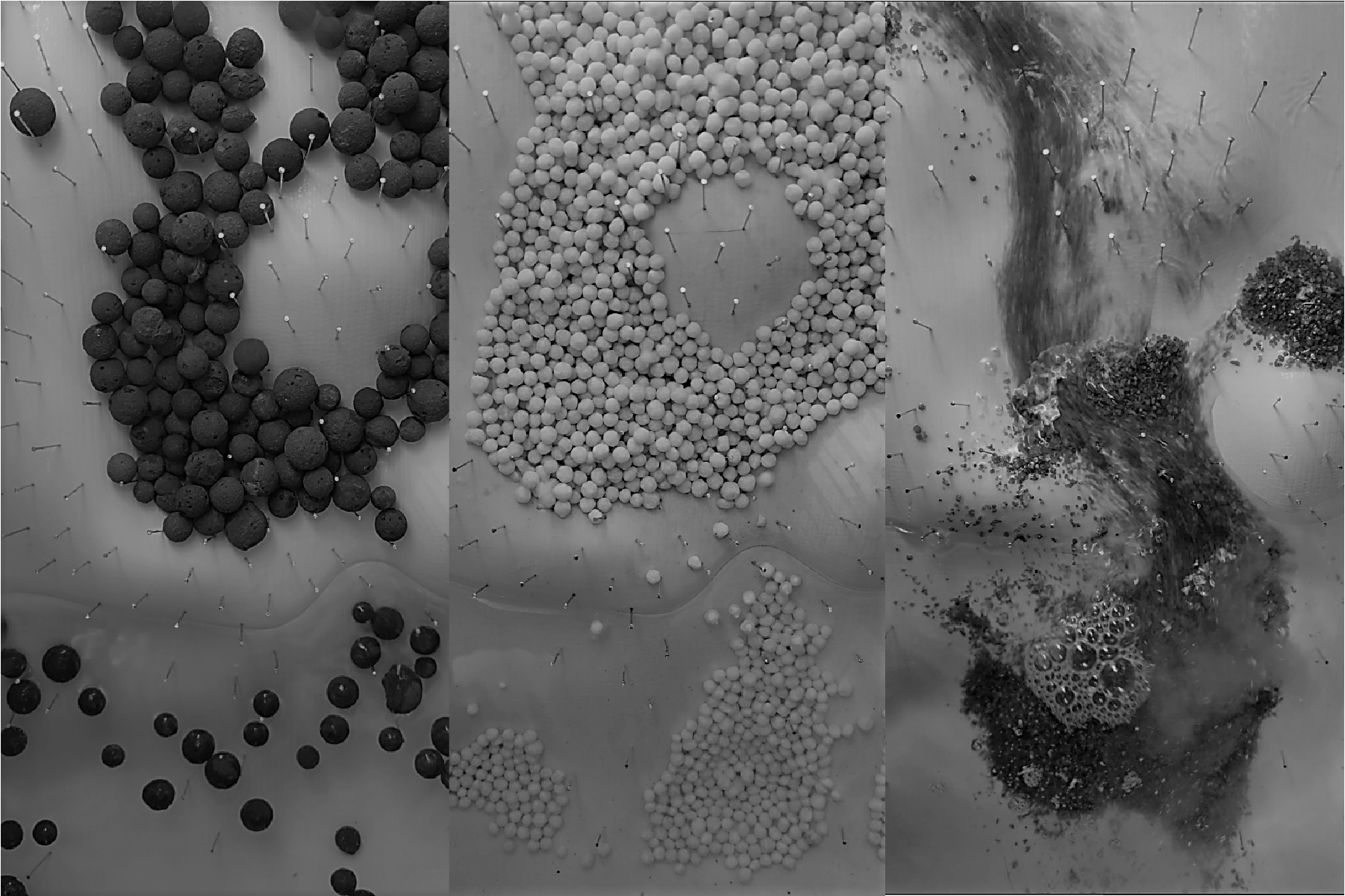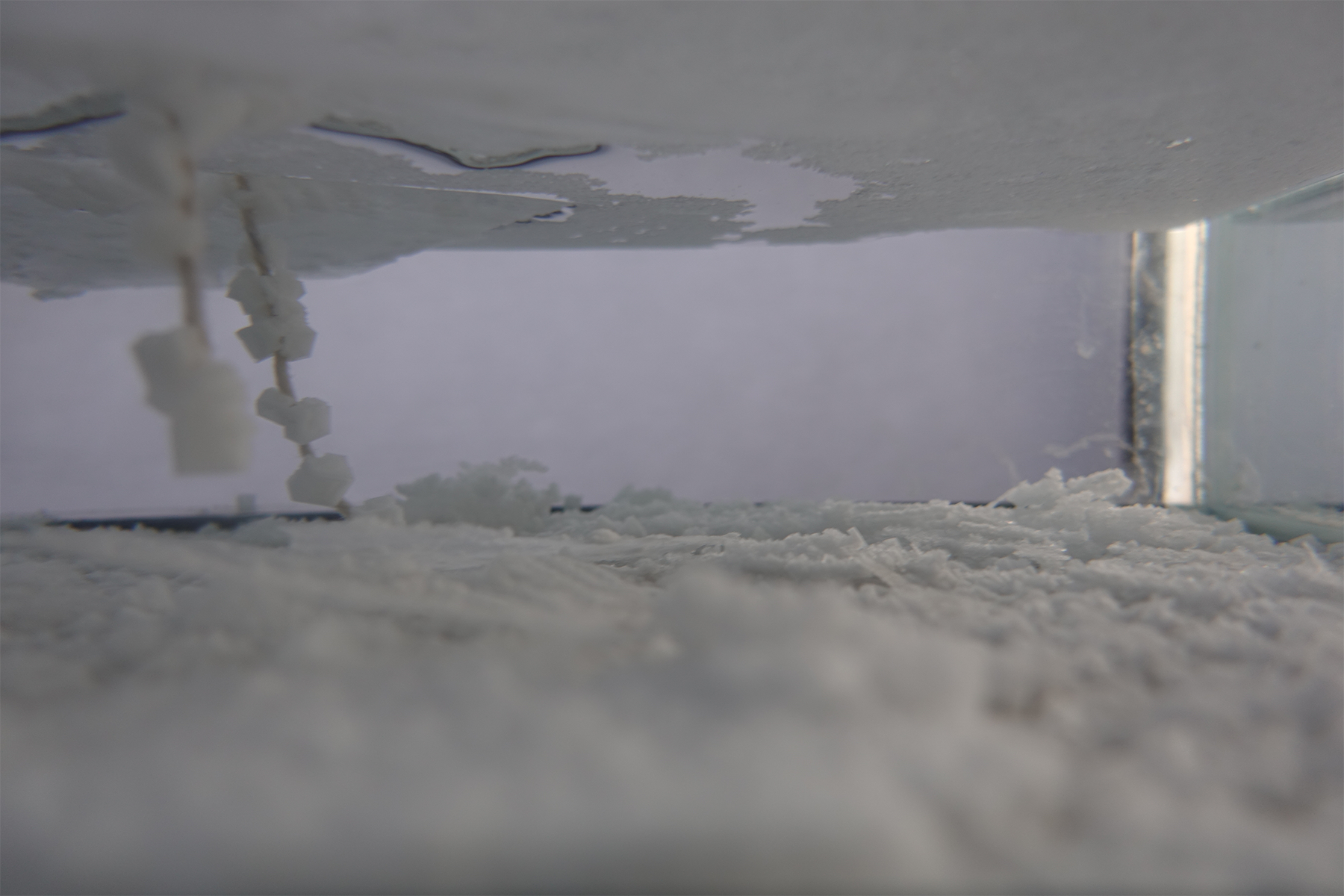Tank Worlds are
environmental models from three courses taught by Associate
Professor Lisa Moffitt at Carleton University’s Azrieli School of Architecture
and Urbanism: a thesis seminar titled ‘Miniaturising the Gigantic’ and two fourth
year undergraduate studios titled ‘Tank Worlds: Hamilton Harbour‘ and ‘Tank Worlds: Port Hope’. The three courses had differing structures and goals, but they shared a common mode of
exploration: the construction of physical models within tanks of water. Tanks
of water offer spaces of speculation about immersion in atmospheric and hydrological
environments, engaging
with the questions of scale, time, and materiality. They combine traditions of
engineering experimentation within tanks of water to test principles of building
ventilation with theoretical ideas of ‘worlding,’ or designing microcosms as
devices of future-speculation.
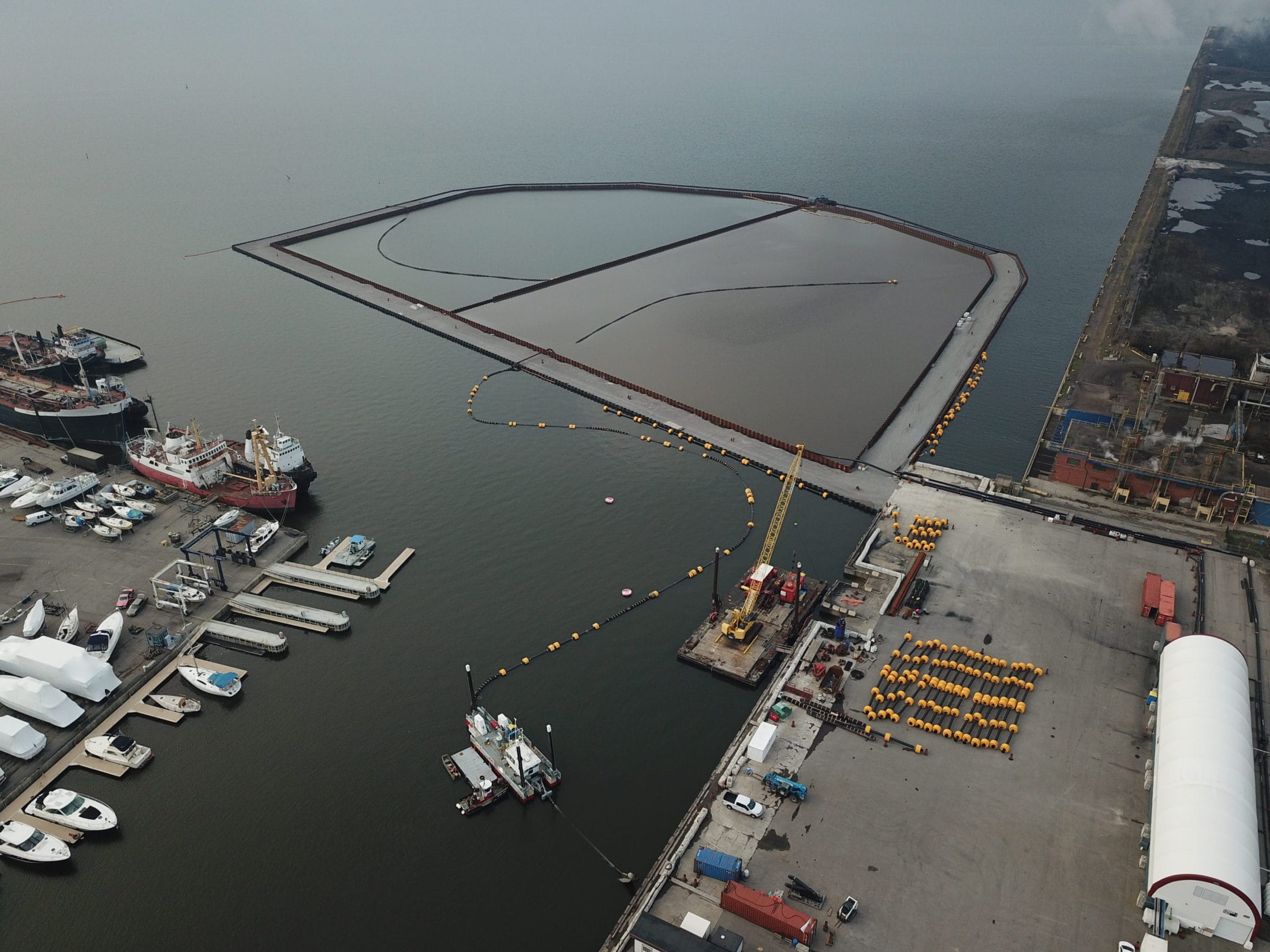 Dredge Containment Facility at Randel Reef, Hamilton Harbour. Source: Environment and Climate Change Canada
Dredge Containment Facility at Randel Reef, Hamilton Harbour. Source: Environment and Climate Change Canada
Design Studio
Tank Worlds: Hamilton Harbour
Students: Dana Adamus, Basi Bassey, Jessica Babe, Colton Chehowy, Jimmy Ear, Mary Hanna, Hailey McGuire, Isabel Serna Moll, Eilidh Sutherland, Brandon Todd
Hamilton harbour is a so-called ‘ecological dead-zone’ of floating coal-tar blobs, soils contaminated with heavy metals, and a skyline of active polluting smokestacks. In 1987, the area adjacent to the Stelco steel mills was designated as one of Canada’s twelve Great Lakes ‘Areas of Concern’ by Canada’s Ministry of Environment. It is the largest site of freshwater sediment contamination in Canada and is currently undergoing a large-scale civil engineering dredging containment project intended to sequester and eventually cap contaminants.
Using tank-world models, mappings reliant on satellite imagery, and video, students designed an alternate, possible future for a portion of the Hamilton harbour. In the tanks, water represented both water and air; ground was constructed within and upon this shifting medium. Oil, dye, sand, and other particulates simulated airborne pollutants as well as contaminated soil and sediment. Architectural models / instruments/ infrastructures made of plexiglass, steel, plaster, and other materials were suspended within, rest upon, or sank into this fluid environment. Components dredged, contained, filtered, and sequestered contaminants, acting as instruments, infrastructures, and architectures of remediation, tending and caring for the site as it recovers over time. Completed Winter 2021, the studio foregrounded working materially to offset the digital monotony of online learning.
With thanks to all of our course guests for contributing to this conversation: Tiago Torres-Campos, Dr. Liam Ross, Jane Hutton, Piper Bernbaum, Anaïs Chanon, Dr. Gail Krantzberg, Suzanne Ewing, and Dr. Ozayr Saloojee.

